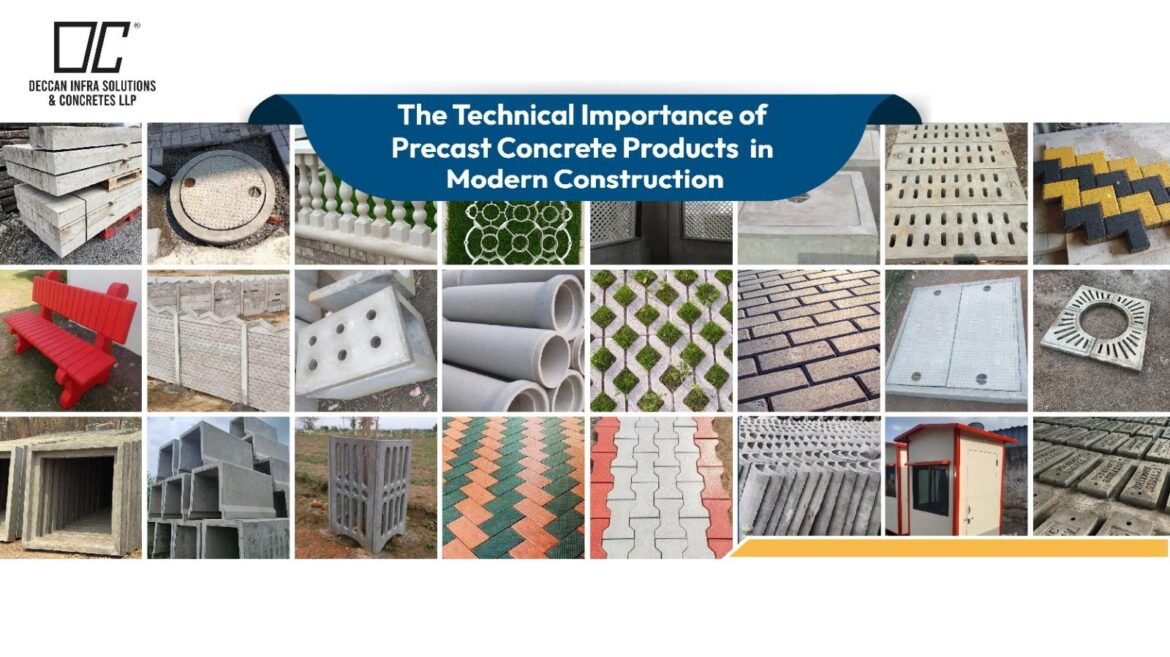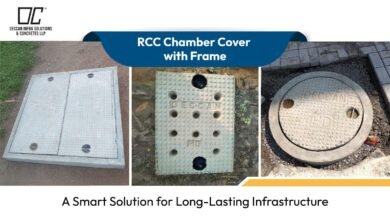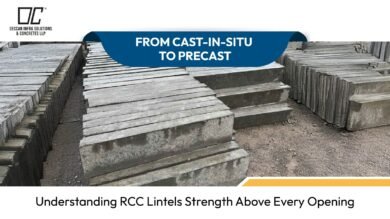Precast concrete products are transforming the construction landscape, offering unmatched structural performance, production efficiency, and long-term durability. Manufactured in a controlled factory environment and then transported to site for installation, precast components deliver both technical and economic advantages over traditional cast-in-situ methods.
1. Superior Quality Control
Produced under stringent manufacturing standards, precast elements ensure:
- Consistent concrete mix design with precision compaction
- Enhanced curing conditions for optimal strength gain
- Dimensional accuracy and reduced on-site variations
Such uniform quality is challenging to achieve with on-site casting, especially under unpredictable weather and labor conditions.
2. Structural Efficiency
Precast products are engineered to meet specific structural demands, offering:
- High load-bearing capacity with optimized reinforcement layouts
- Pre- and post-tensioning options for longer spans and thinner sections
- Better ductility and crack control—critical in seismic zones and heavy-load applications
3. Faster Construction & Less Site Congestion
By manufacturing off-site, production and site preparation happen simultaneously, resulting in:
- Reduced shuttering and scaffolding requirements
- Quick installation using cranes and lifting equipment
- Lower on-site labor needs, improving safety and efficiency
4. Durability & Low Maintenance
Precast concrete resists:
- Chemical attacks (sulfates, chlorides)
- Freeze-thaw cycles
- Fire and corrosion
With the right mix design, precast elements ensure decades of performance with minimal upkeep—ideal for infrastructure, marine, and industrial projects.
5. Sustainability & Waste Reduction
Factory-controlled production leads to:
- Reusable molds and optimized resource utilization
- Reduced cement waste and lower carbon footprint
- Less noise and dust pollution at construction sites
6. Design Flexibility & Modular Construction
Modern precast technology integrates with BIM (Building Information Modeling) for:
- Accurate planning and clash detection
- Custom shapes, textures, and finishes
- Modular construction for repeatable, standardized designs
Conclusion
Precast concrete products meet the demands of modern construction—speed, quality, durability, and sustainability. From high-rise buildings and bridges to industrial plants and public infrastructure, they deliver faster timelines, consistent quality, and reduced life cycle costs.
As the industry embraces industrialized and digitalized construction, precast will continue to play a pivotal role in building smarter, faster, and greener.





